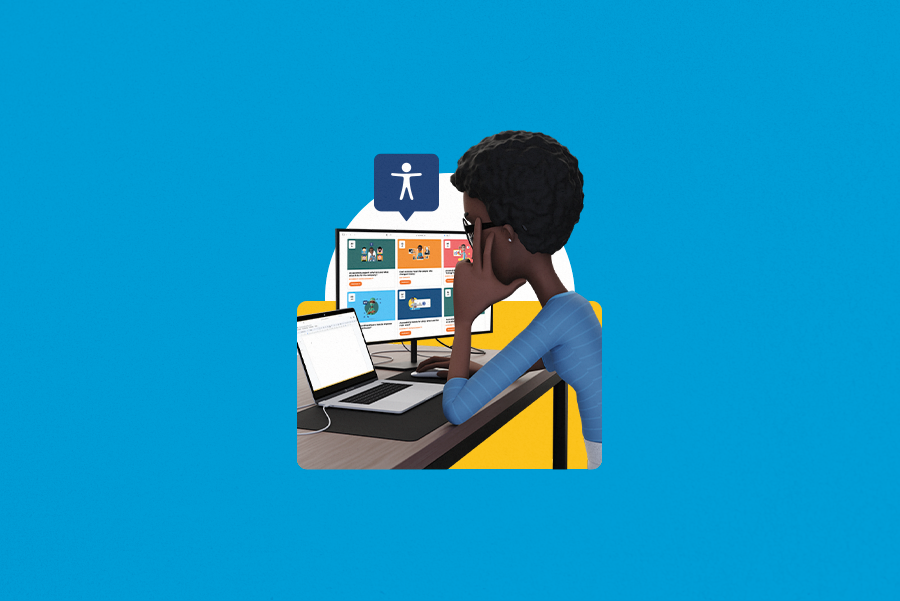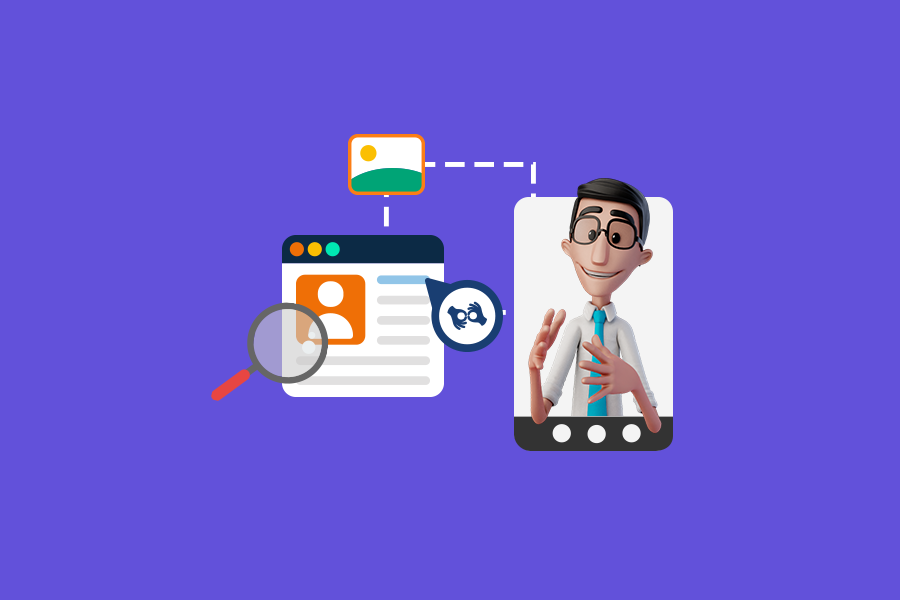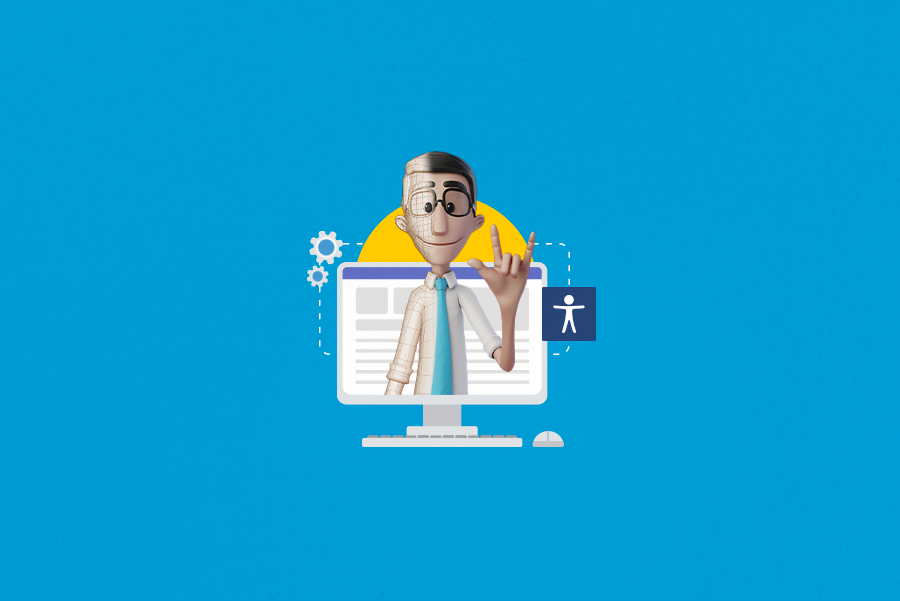
Accessible Digital Content: how to create it and why it matters

In today’s digital age, the internet has become an integral part of our lives. From educational resources to entertainment and e-commerce, digital content surrounds us. However, not everyone experiences the web in the same way. Many individuals with disabilities face barriers when accessing digital content. To ensure inclusivity and equal access for all, it is essential to create content that is accessible. So let’s dive in and explore what accessible digital content is, why it matters, and how you can create it!
What is accessible digital content?
Accessible digital content refers to online materials and information that are designed and developed in a way that can be easily perceived, operated, and understood by a wide range of users, including those with disabilities. This includes individuals with visual, auditory, motor, and cognitive disabilities.
Accessible content ensures that everyone, regardless of their abilities or disabilities, can access and interact with digital resources.
Why should you make your digital content accessible?
Creating accessible digital content is not just a matter of legal compliance; it’s a fundamental aspect of digital ethics and user experience. Here are some compelling reasons why you should prioritize accessibility in your digital content:
Inclusivity and equal opportunity
Accessibility ensures that your content can be consumed by all individuals, regardless of their abilities. By making your digital content accessible, you provide equal opportunities for education, employment, and participation in society.
Legal requirements
Many countries have enacted laws and regulations that mandate digital accessibility, such as the ADA (American with Disabilities Act) here in the US. Ignoring these requirements can result in legal consequences, including fines and litigation.
Expanded audience
Accessible content reaches a broader audience. When your content is accessible, you are not only catering to individuals with disabilities, but also to those who may be using different devices or are in different environments, such as mobile phones or noisy surroundings.
Improved SEO
Search engines favor websites with accessible content because they prioritize user experience. By making your content more accessible, you can improve your website’s search engine ranking.
Enhanced reputation
Demonstrating a commitment to accessibility enhances your organization’s reputation. It signals that you care about all users and are committed to providing an inclusive online experience.
Now that we understand why accessible digital content matters, let’s delve into the principles and guidelines to create it effectively.
Start with 4 accessibility principles
To create accessible digital content, you can begin by adhering to four essential principles: operable, perceivable, robust, and understandable. These principles form the foundation of accessibility.
Operable
Operable content means that users can navigate and interact with your content using a variety of input methods. It ensures that your website or application is user-friendly for people with disabilities who may use keyboards, screen readers, Sign Language translators, or voice commands.
Perceivable
Perceivable content ensures that users can perceive the information being presented. This principle covers aspects like providing alternative text for images and offering captions for multimedia content to make it accessible to people with visual or hearing disabilities.
Robust
Robust content is built to be compatible with different technologies and future-proof. It ensures that your content will work well with various assistive technologies and is not vulnerable to becoming obsolete.
Understandable
Understandable content is clear and straightforward. It avoids confusion and ambiguity, making it easier for users to comprehend the information presented.
Guidelines: how to create an accessible digital content?
It is amazing to know the importance of having accessible digital content and promoting web accessibility. However, it is equally important to learn how to create it, right?
So we have put together a list of 10 items to act as a guideline for you when creating your next digital contents. Enjoy!
- Color contrast
Maintain proper color contrast between text and background to ensure that text is readable for everyone. Avoid color combinations that may be difficult to distinguish, particularly for individuals with color blindness.
- Alternative text
Include descriptive alternative text for images. This text is read aloud by screen readers and provides context for users who cannot see the images. Make sure the alt text conveys the image’s purpose or content accurately.
- Semantic HTML
Use semantic HTML tags to structure your content properly. Semantic tags like headings, lists, and tables help screen readers interpret the content’s structure and provide a better reading experience for users.
- Structure
Organize your content logically with clear headings and subheadings. This helps users understand the hierarchy and flow of your content. Proper structuring also benefits screen reader users.
- Links
Make sure that links are descriptive and provide context about where they lead. Avoid generic phrases like “click here” or “read more.” Instead, use meaningful link text.
- Language
Specify the language of your content using the HTML “lang” attribute. This ensures that screen readers pronounce words correctly and allows translation services to provide accurate translations.
- Social media
If your content includes social media sharing buttons or embedded feeds, ensure they are accessible. These elements should be operable by keyboard and should not cause distractions.
- Images
Include a description of images in the content. This is especially important for infographics, charts, and diagrams. Users with visual disabilities rely on this description to understand the visual content.
- Videos
Provide captions, transcripts and Sign Language translation for videos. Captions and Sign Language translation make video content accessible to individuals with hearing disabilities, while transcripts offer an alternative way to access the content for all users.
- Accessibility check
Regularly test your content for accessibility. There are various online tools and browser extensions available that can help you identify and fix accessibility issues.
Conclusion
In today’s diverse and interconnected world, it is super important to recognize that accessibility is not an option; it is a necessity. By making your digital content accessible, you contribute to a more inclusive digital environment where everyone can participate and engage with the vast wealth of information and resources available on the web.
Do you want to commit to creating a more accessible digital future? Then start your accessibility journey with the Hand Talk Plugin, an ASL (American Sign Language) AI translator for all your website’s written and image contents. Check it out!


